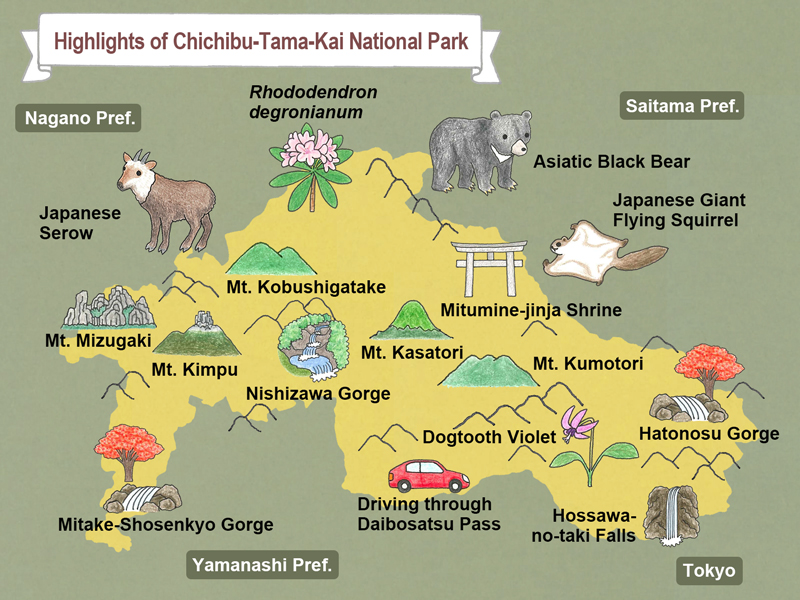- MOE
- National Parks of Japan
- Chichibu-Tama-Kai National Park
- Guide of Highlights
main body
Highlights of Chichibu-Tama-Kai National Park
Okuchichibu Mountains
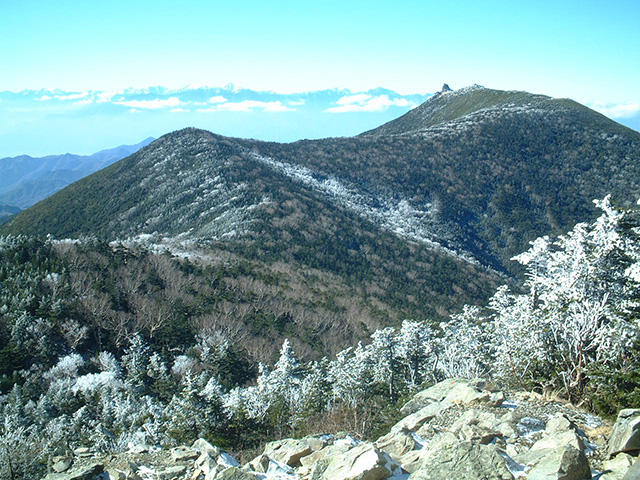
Okuchichibu Mountains
Extending from Mt. Mizugaki, Mt. Kimpu, and Mt. Kobushigatake all the way to Mt. Kumotori, the Okuchichibu Mountains constitutes the very heart of Chichibu-Tama-Kai National Park and encompasses a diverse range of landscapes. Climb and traverse each individual mountain to enjoy different experiences in accordance with your strength and skills.Visit Masutomi Hot Springs at the foot of Mt. Mizugaki and Mt. Kumotori to relieve the fatigue of mountain climbing.
Mt. Kimpu
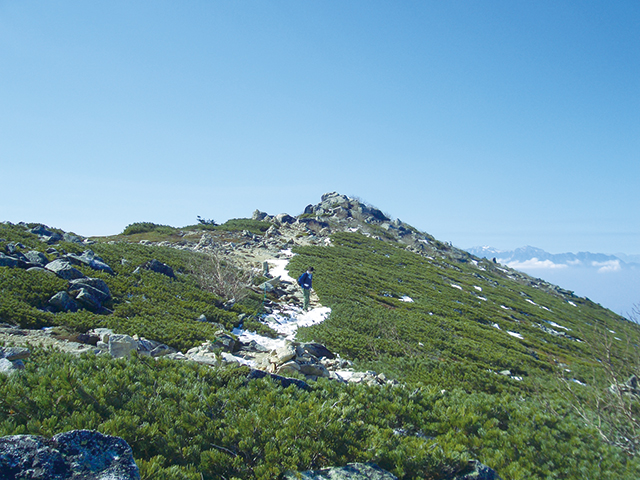
Mt. Kimpu
Situated on the prefectural border between Yamanashi and Nagano, Mt. Kimpu is the tallest peak of the Okuchichibu Mountains. Covered by an expansive colony of dwarf stone pines near the mountain top, the mountain evokes a distinctive mood that contrasts sharply with other conifer-enveloped peaks in the Okuchichibu.
Mt. Mizugaki

Mt. Mizugaki
This mountain is riddled with countless granite faces left by erosion and weathering, creating a unique landscape.
Mt. Kita-Okusenjo and Yumeno-Teien Garden
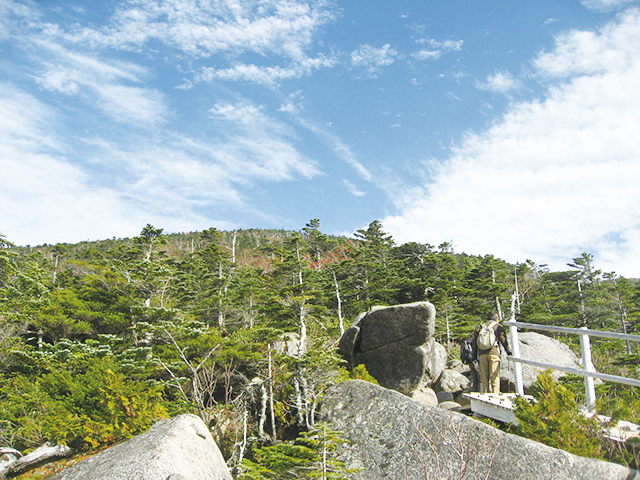
Mt. Kita-Okusenjo and Yumeno-Teien Garden
Mt. Kita-Okusenjo is the highest peak of Okuchichibu Mountains and offers magnificent views at the top. Yumeno- Teien Garden adjacent to Oodarumi Pass presents lovely views created by the gigantic stones, bushes, and alpine plants reminiscent of a garden.
Mitake-Shosenkyo Gorge
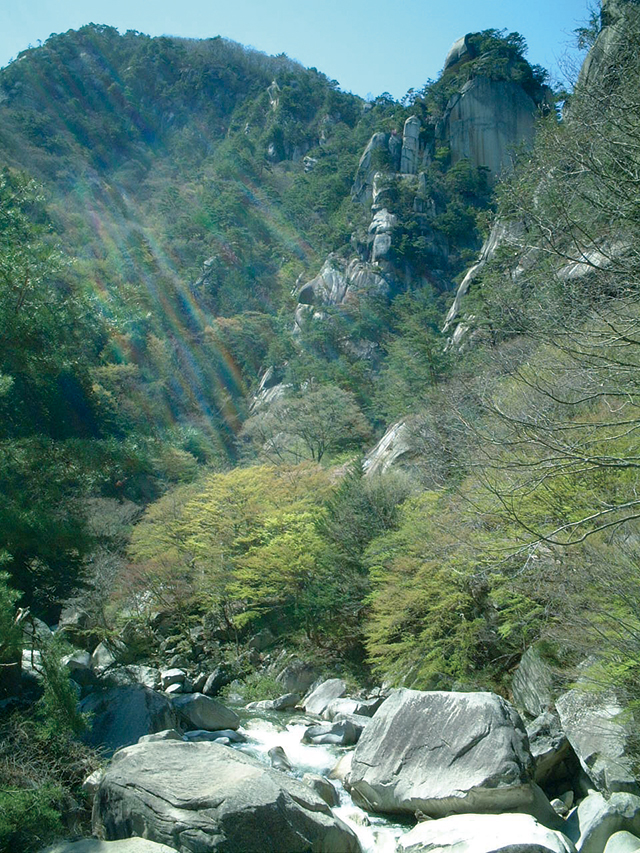
Mitake-Shosenkyo Gorge
Mitake-Shosenkyo Gorge is widely known for its beautiful valley typical of Japan. The white rock surface is beautifully adorned by green pine trees in summer and crimson and yellow foliage in the fall to fascinate many tourists.
Mt. Kobushigatake
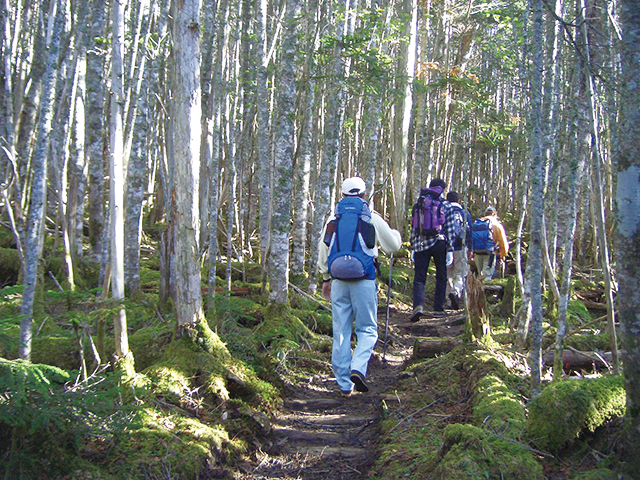
Mt. Kobushigatake
Mt. Kobushigatake is the site of the headwaters of the Chikuma River, Fuefuki River, and Arakawa River. And is named because the mountain spans Kai, Musashi, and Shinano. This mountain is enveloped in a deep primeval forest where the area is ablaze with flowering rhododendron in June.
Nishizawa Gorge
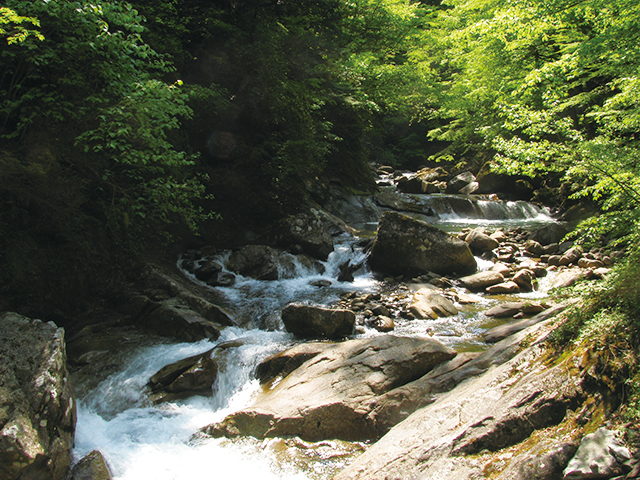
Nishizawa Gorge
The Nishizawa Gorge is a dynamic ravine created by the actions of a clear stream flowing through a primeval forest. The surrounding scenery is reflected in the surface of the water exhibiting a diverse range of seasonal appearances.
Mt. Kasatori and Mizuhi
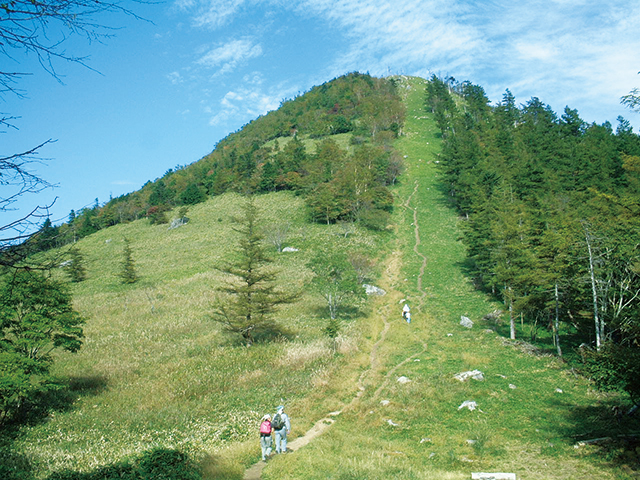
Mt. Kasatori and Mizuhi
Mt. Kasatori is the site of the headwaters of the Tama River, and the Mizuhi near the mountain top lets visitors encounter the very first drop of the Tama River. The climbers can climb up the mountain in a relatively short time and enjoy excellent views, which is the secret of its popularity among climbers.
Mt. Ryokami

Mt. Ryokami
Situated at the northern end of the park, Mt. Ryokami is one of the Nihon Hyakumeizan (hundred famous mountains in Japan). It is traditionally a mountain for worship and a number of stone Buddhist images remain along the mountain trails. There is a cliff extending about 50 m at the mountain top.
The Ruins of the Tochimoto Checkpoint

The Ruins of the Tochimoto Checkpoint
Tochimoto is a mountain community at the junction of Chichibu Road, which would have been taken to get past Karisaka Pass and head towards Koshu Province, and Shinshu Road, which would have been taken to get past Jumonji Pass and head in the direction of Shinshu Province. The ruins of the Tochimoto Checkpoint recall a time when traffic through these parts was much greater.
Mitsumine-jinja Shrine

Mitsumine-jinja Shrine
Mt. Mitake and Mt. Mitsumine have traditionally been a mecca of mountain worship, and the mountains formerly flourished as a place to train Buddhist priests. The periphery of Musashi-Mitake-jinja Shrine and Mitsumine-jinja Shrine creates a solemn atmosphere as a site of mountain worship in combination with shrine pavilions, approaches, sacred trees, and temple lodges.
Daibosatsu Pass
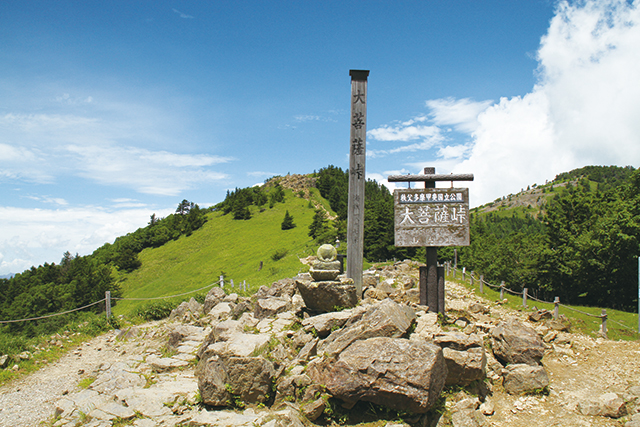
Daibosatsu Pass
Daibosatsu Pass was made famous in Kaizan Nakazato's unfinished novel Daibosatsutoge. The mountain ridgeline at this spot is home to grassland vegetation and commands a spectacular panoramic view. With its great accessibility, Daibosatsu Pass is a popular destination among hikers.
Mt. Kumotori
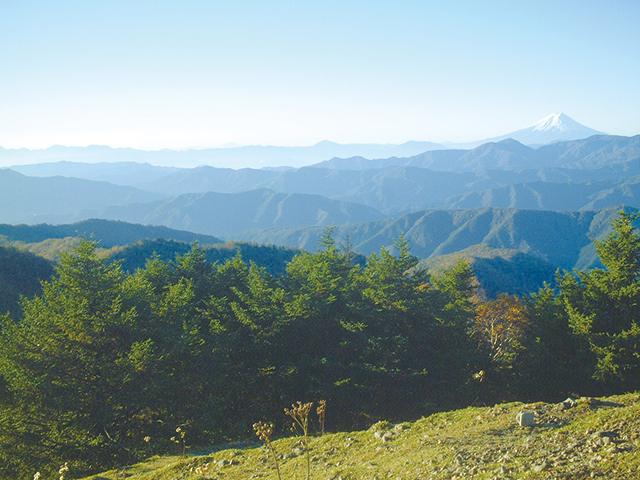
Mt. Kumotori
It is the highest peak in Tokyo and its expanded fir belt and primeval forest offer a completely different type of landscape to visitors.
Hatonosu Gorge
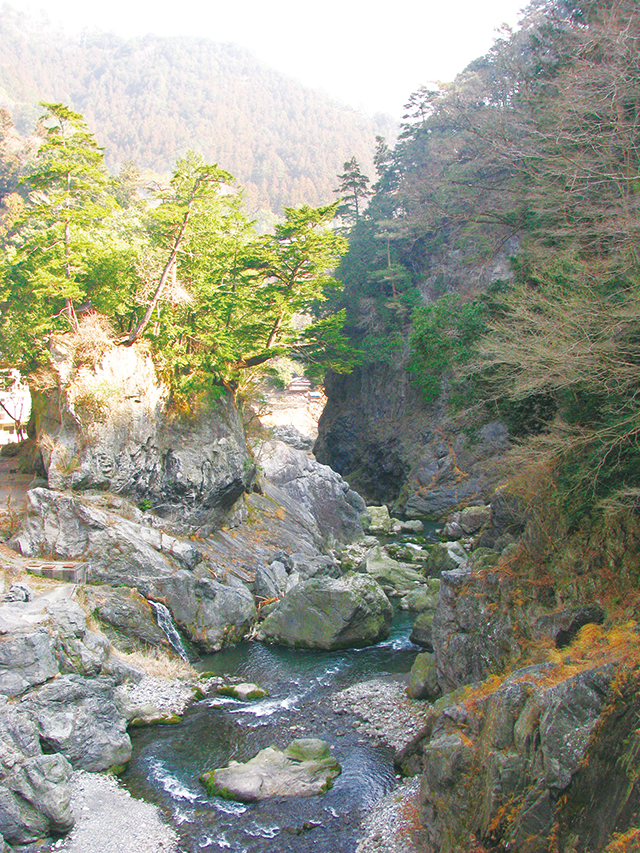
Hatonosu Gorge
The valley is located upstream of the Tama River, where it is lined with gigantic and oddly shaped rocks formed through erosion by streams of water. It is also famous for the beautiful colored leaves and visited by a host of tourists in the fall.
Hossawa-no-taki Falls

Hossawa-no-taki Falls
Hossawa-no-taki Falls
Hossawa-no-taki Falls Situated in Hinohara Village in the Tokyo Metropolis, this waterfall was selected as one of Japan's top 100 waterfalls. Hinohara Village holds an "Icefall Quiz" in which people try to guess the winter day on which the waterfall will freeze the most.
The Metropolitan Nature Trails

Musashi Mitake-jinja Shrine
The Metropolitan Nature Trails
The Kanto-fureaino-michi Trail (The Metropolitan Nature Trails) is a long-distance nature trail that goes around seven prefectures (Tokyo, Saitama, Gunma, Tochigi, Ibaraki, Chiba and Kanagawa) in the Kanto region. There are four courses that stretch about 41.6 km within the park. The nature trail offers not only beautiful nature but also a place where visitors come in contact with regional history and culture.
Wildlife & Plants
Dogtooth Violet (Erythronim japonicum)

Dogtooth Violet (Erythronim japonicum)
Blooms in early spring with a pale purple flower. Colonies of the plant can be seen at Mt. Gozen within the park.
Rhododendron degronianum

Rhododendron degronianum
This plant grows densely at Jumonji Pass on the border between Saitama and Nagano Prefectures, with many visitors coming to enjoy the blooming season in June. Rhododendron brachycarpum can be seen at higher altitudes, and Rhododendron aureum near the peak of Mt. Kimpu.
Japanese Giant Flying Squirrel (Petaurista leucogenys)
Japanese Giant Flying Squirrel (Petaurista leucogenys)
Endemic to Japan, this species is distributed throughout Honshu, Shikoku, and Kyushu, where it primarily inhabits forests in mountainous areas and flatlands. Using a patagium, a membranous structure that stretches from its long front legs to its rear legs, the animal moves at night by gliding among the trees.
Japanese Serow (Capricornis crispus)

Japanese Serow (Capricornis crispus)
While resembling a deer, it is actually a member of the cow family. It inhabits the mountainous area within the park and has been designated a Special Natural Monument of Japan.
Asiatic Black Bear (Ursus thibetanus japonicus)
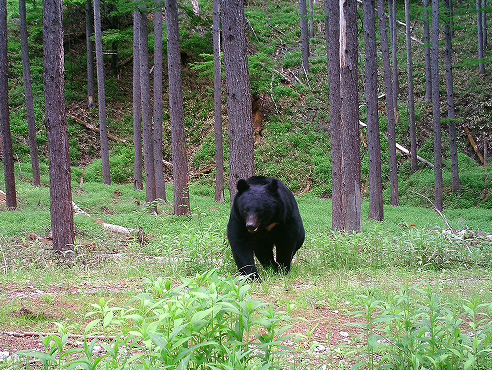
Asiatic Black Bear (Ursus thibetanus japonicus)
The largest terrestrial mammal on Honshu. The Asian Black Bear, as called "Moon-Ring Bear" in Japanese, is distinguished by the crescent-shaped/V-shaped white marking on the chest. Found in the forests of the park.
